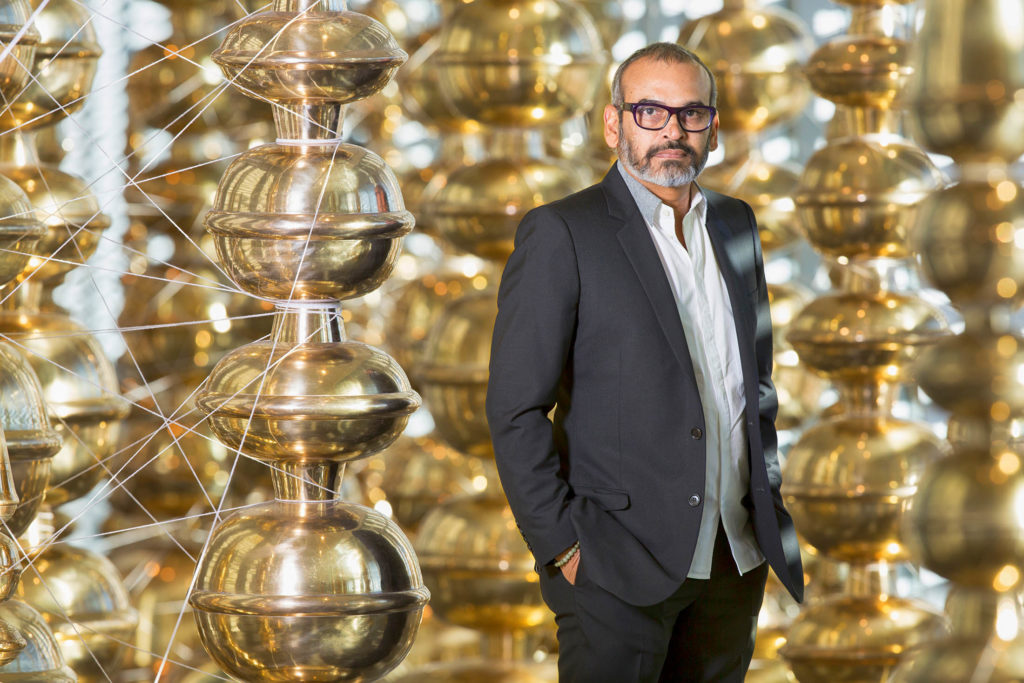Indian contemporary artist Subodh Gupta is well-known for his mixed-media and sculpture installations. Gupta, born in Khagaul, Bihar, India, in 1964, continually explores subjects of daily life, Indian culture, and international affairs in his artwork. He became well-known worldwide for using commonplace things—especially kitchenware made of stainless steel—to create expansive installations.
Gupta’s obsession with the combination of old and everyday features, as well as the swift social and economic shifts occurring in India, is evident in his work. He has displayed his artwork worldwide and is associated with the Indian contemporary art movement.
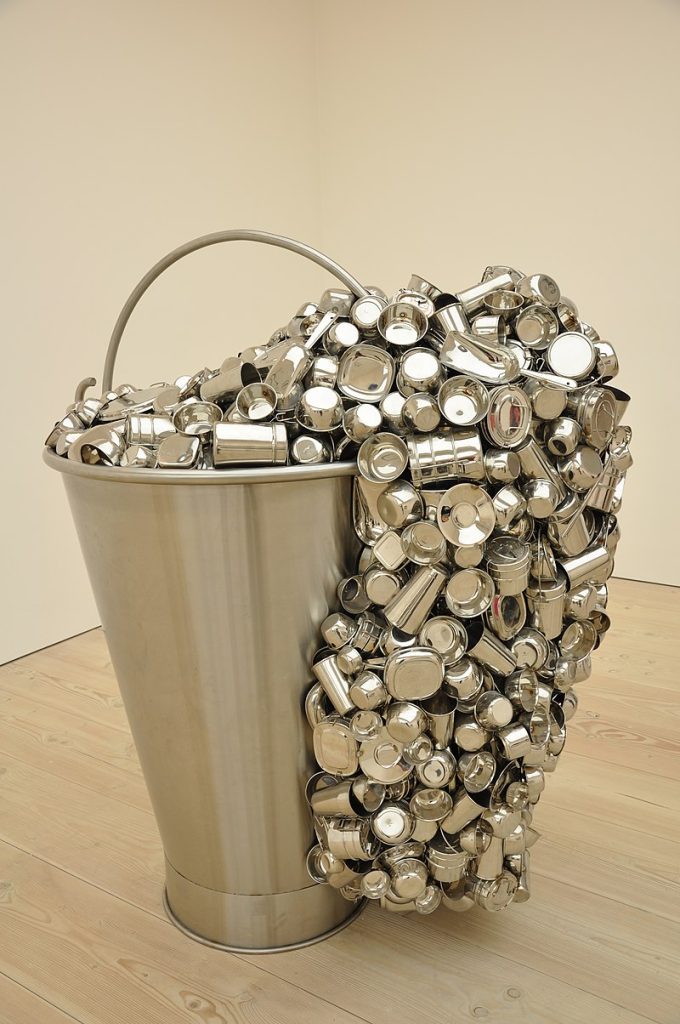
Subodh Gupta is known for his large-scale piece “This is not a fountain,” which is made out of milk pails, “Very Hungry God,” which is a skull built out of stainless steel pots and pans, and “Line of Control,” which is a series of stainless steel tiffin boxes positioned in the style of a map. Subodh Gupta has gained praise for his contributions to contemporary art settings and has taken part in many solo and group exhibits internationally and domestically.
Subodh Gupta’s works
Artist Subodh Gupta is well-known for his various works, including paintings, drawings, installations, and sculptures. Stainless steel cookware, in particular, is frequently incorporated into his artwork to address topics of globalisation, migration, identity, and Indian culture. In his 2008 installation Line of Control, he used stainless steel tiffin boxes to map the boundary between India and Pakistan. In Gupta’s work, the confluence of politics and the personal is emphasised by using everyday objects to symbolise geopolitical boundaries. A sculpture known as “Very Hungry God” (2006) is fashioned entirely of stainless steel pots and pans and has the shape of a skull. It’s a solid and moving piece that addresses ageing and the human condition.
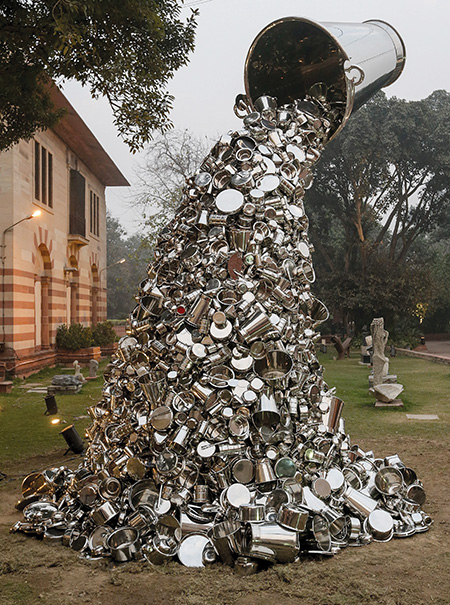
The large-scale installation “This is not a fountain” (2011) by Gupta uses milk pails to create a flowing fountain. The composition addresses the more significant themes of wellspring and nourishment while deliberating on milk’s importance in Indian culture. In 2018, an installation titled “What does the vessel carry that the river does not?” contained a boat constructed of repurposed cuisine pots and pans. The path of life and the containers preserving our memories and affairs are figuratively studied in the art. This installation brings the life journey of humans, the migration, and the floating uncertainty.
The 2017 installation “Seven Billion Light Years” echoes the destruction driven by war and the devastating force of nuclear weapons through the use of a vast mushroom cloud created out of stainless steel containers. In his 2013 artwork series “When Soak Becomes Leak,” Gupta utilised kitchen towels washed in tea, letting the liquid spill and forming abstract patterns. The line dividing creative articulation and daily practises is clouded in the work.
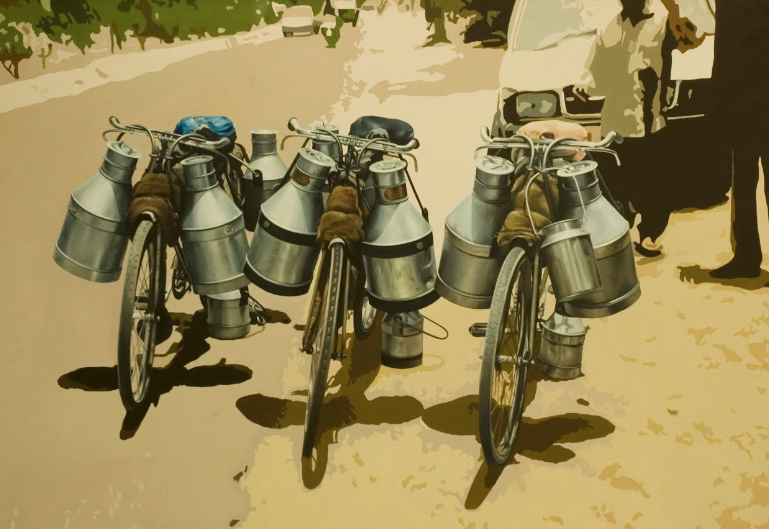
Courtesy: National Gallery of Modern Art,
The 2018 show “Everything is Inside” includes various pieces, such as paintings, sculptures, and installations. It demonstrated Gupta’s ongoing investigation of subjects and resources about his Indian ancestry and current international affairs. His work frequently ignites dialogues on globalization’s effects, cultural identity, and how commonplace things may become rugged symbols.
Gupta has a passionate, creative process and constantly creates new compositions, experimenting with various mediums and topics.
Subodh Gupta’s Cultural Identity
Subodh Gupta is known for his creative use of stainless steel materials in his cookware. His unique artistic perspective is prominent in his ability to convert everyday objects into captivating and thought-provoking artwork. The Reflection of Indian Culture, tradition, and daily life is praised. He provides a contemporary viewpoint on these themes, making his art relevant to Indian and global audiences.
The work of Subodh Gupta is anchored in his Indian identity, yet it addresses global themes. Global themes, including migration, globalisation, and geopolitical tensions, are also discussed in Gupta’s artwork. His topics’ universality aids exemplify why his work is so well-known worldwide. Gupta frequently discourses cultural, personal, or global identity issues in his art. The investigation strikes a chord with viewers who value art that explores intricate and timely subjects.
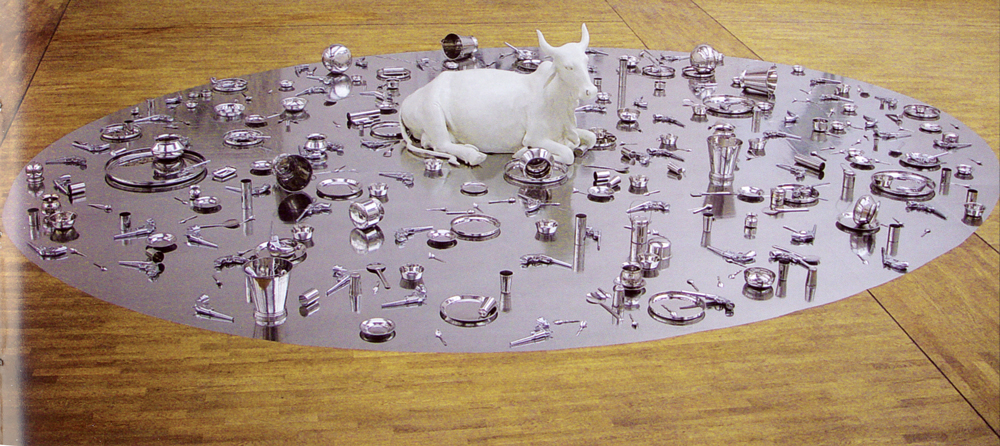 Subodh Gupta has contributed substantially to the current conversation regarding the nexus of traditional and modern, local and global, by inspiring and influencing other artists. Gupta’s use of various media, such as sculpture, installations, paintings, and drawings, demonstrates his versatility as an artist. Because of his adaptability, he can convey his thoughts in various forms, which appeals to a wide range of art enthusiasts.
Subodh Gupta has contributed substantially to the current conversation regarding the nexus of traditional and modern, local and global, by inspiring and influencing other artists. Gupta’s use of various media, such as sculpture, installations, paintings, and drawings, demonstrates his versatility as an artist. Because of his adaptability, he can convey his thoughts in various forms, which appeals to a wide range of art enthusiasts.
Analysing Subodh Gupta
Subodh Gupta’s artwork considers various elements, including the mediums he selects, subjects, cultural references, and the broader context of modern art. As his primary supply source, Gupta consistently employs stainless steel cookware, including pots and pans. These materials are transformed into enormous installations and sculptures that challenge perceptions of what qualifies as adequate art supplies.
The cultural milieu of Gupta’s boyhood and his Indian identity is often reflected in his art. Seek for components that reference Indian customs, ceremonies, and emblems. Gupta frequently makes symbolic decisions with items. Consider the items’ significance and how they add to the artwork’s statement. Gupta conveys tales or tells stories in several of his works. Explore the descriptions within the artworks and how they relate to broader social, political, or personal themes.

Image courtesy: Artsy
The conflict between personal experiences and collective identity is a recurring theme in Gupta’s artwork. Think about how his writing addresses individual experiences and more general societal challenges. In Gupta’s artwork, pieces of mortality, life, and the human condition recur frequently. Consider these themes’ comments on the human experience and how they are expressed.
Consider how Gupta’s creations align with more general current art movements. Is he questioning established norms, reacting to specific trends, or adding to a larger conversation about art? Viewers are frequently treated to a multisensory experience by Gupta’s expansive installations. Think about how the objects’ sizes, compositions, and arrangements affect how you view and interact with the piece of art.
It must balance in-depth self-reflection and knowledge of the more significant cultural and creative background to interpret Subodh Gupta’s work. Like with every artist, different people will view his works differently, and there is usually room for different interpretations of their significance and meaning.
Subodh Gupta and Capitalism
The work of Subodh Gupta explores several topics, such as elements of modern society and globalisation, and it is interpretable as capitalist. Daily items by Gupta, primarily kitchenware made of stainless steel, might be decoded as representations of consumerism. By converting simple objects into expansive works of art, he challenges spectators to reevaluate the importance and value placed on commonplace goods. Given the global reach of this industry, Gupta’s analysis of migration, cultural identity, and globalisation in his artwork might be interpreted as a statement on the consequences of capitalism on societies. One of the main themes in his work is the cross-border movement of people, goods, and ideas.
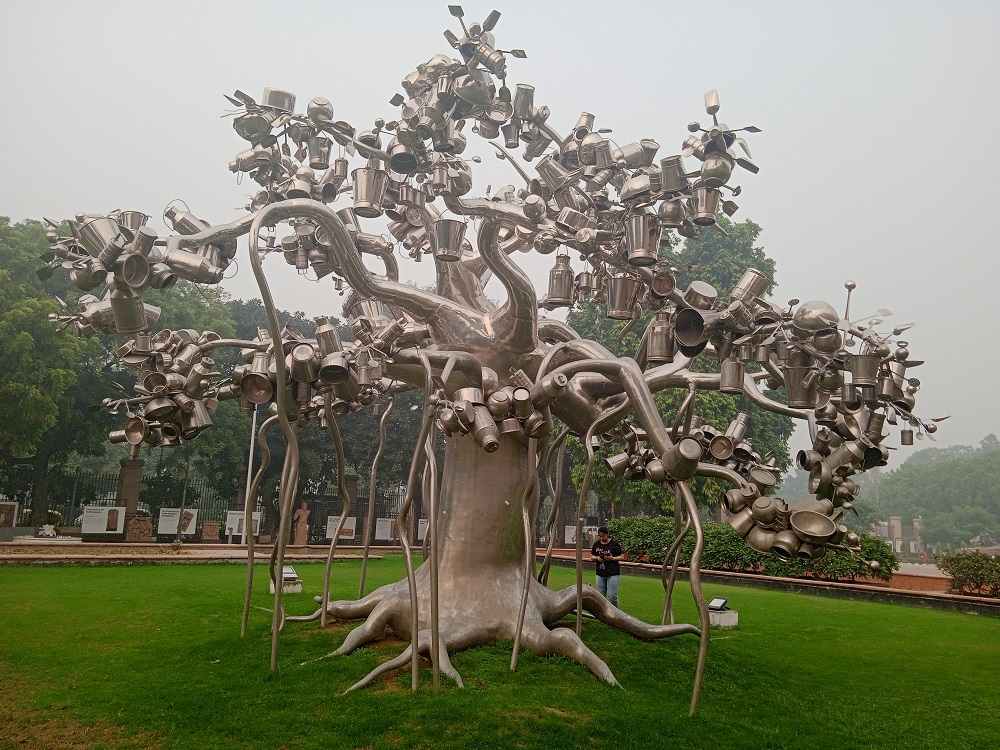
The monetisation of commonplace goods is questioned by Gupta’s reworking of ordinary objects into colossal sculptures. This procedure examines the capitalist version of value and trade by upending the conventional market valuations connected to these items. Some of Gupta’s artwork criticises the surpluses and potential dangers associated with capitalism-driven industries, such as those about technology, the environment, and conflict. Examples are the giant mushroom clouds he constructed using stainless steel containers. Stainless steel cookware highlights the industry and labour involved in producing these items. This critiques the economic structures that support consumption and mass production.

Krispin Joseph PX, a poet and journalist, completed an MFA in art history and visual studies at the University of Hyderabad.


